REMINISCENCES: Sojourn in the Mountain-Lands of Kruger
In a previous blog, I
mentioned and explained my devotion to
the central and northern regions of the Kruger National Park, South Africa. I
also pointed out several reasons why I had neglected the southern sections of
this magnificent park during the past decades. Yet, following a very brief trip
to the southwestern region of Kruger in early 2017, I had vowed to return before
long to the previously shunned expanses of the park.
So, towards the end of 2018, Jacqui
and I set off to spend a week at Berg-en-Dal Camp. This camp had been built in
Kruger long after my childhood. It also featured a different style of
architecture of the buildings, a shape and layout that was very different from
the quaint rondavel circles of the older camps. Several other factors that
impinge significantly on my enjoyment of the wilderness and any chances of
snatching good photographs had kept me away from Berg-en-Dal previously.
I spent quite a while mulling over the
pros and cons of such a visit, before I finally resolved to stay over at Berg-en-Dal
for a week. The camp is stationed very close to the entrance gate into Kruger
at Malelane, which itself is very close to countless ‘safari lodges’ (without
game!) crowded along the southern border of the park. Moreover, Malelane Gate
is only a short drive away from the bustling city of Mbombela. This combination
of circumstances ensures that throughout the day all the roads in the immediate
vicinity of Berg-en-Dal carry heavy traffic – trucks carting supplies to the
park’s southern camps, buses conveying staff into and out of the park, and
day-visitors who are eager to traverse the greatest distance possible in
limited time. Of course, my nemesis, the presence of countless safari lodge
jeep-jocks and their noisy guests required exacting consideration.*
Besides, the location of Berg-en-Dal Camp
at the edge of the Malelane Mountain-land restricts the choice of any visitor (leaving
the camp or returning to it) to a single decision – whether to turn left or to
turn right at the camp’s entrance gate. Therefore, traffic close to camp is
concentrated and increased dramatically in the earliest and latest hours of the
day – precisely the time that is ideal for photography.
Despite grave reservations, I decided
that I could not delay the opportunity to explore the hills and kopjes in this part
of Kruger. For too long, I had abandoned the scenery, the many distinctive
species of plants that grow in this region and an enjoyment of a different part
of the Kruger National Park.
Inevitably, I had packed some rain
amongst our camping equipment – luckily, this time, a few mornings and
afternoons remained clear enough for some splendid play of light and shadow. Notwithstanding
the crowds and the rain, we enjoyed a most wonderful trip. Our luck with photogenic
sightings was astonishing – no doubt, the presence of my lucky game-spotting charm
bolstered our luck; my youngest sister, Bärbel, joined us on this trip. Each
day confronted us with exceptional sightings of game and photographic
opportunities. Our short trip was so packed with excitement that we even forgave
the camp’s resident baboon troop after it had ripped through (not opened) our
tents – one side wall of our two, small tents each were aerated by metre-long
tears, despite us storing all food safely inside our locked vehicle, day and
night.
The roads through the mountain-lands were
fabulous. The numerous densely-vegetated gullies between smaller hills, the
narrow expanses of flat land bordered by the boulder-strewn slopes of some
kopjes across which the roads threaded their way, and the many views of
majestic hills and a few mountains enthralled us. Each drive along these
steeper, winding sand roads provided large herds of buffalo and elephant. The
recent decline of the lion population in the southern section of the park meant
that we could not travel without lurching into leopards along the bases of kopjes
and along the many smaller rivers and vleis on the flatter plains around
Berg-en-Dal.
The assortment of stunning sightings
of game in the picturesque landscape that surrounds Berg-en-Dal kept me quickened
and very busy every day. Animals, plants and the landscape enveloped me. For
once, I trundled across several photographic opportunities that I could work
earnestly to capture in images at least a few impressions of this splendid
environment. I even managed to spend twenty minutes or so in the company of a
young honeybadger that was busy excavating a large dung-pile for juicy beetle
grubs.
A hefty storm that showered Berg-en-Dal
for an hour one night, caused runoff from the slopes of the hills to start
flowing down smaller gullies and rivers. From a bridge, we spotted a huge
crocodile fishing below the low wall of an overflowing weir. Regularly, Sharp-tooth
Catfish and minute Barbs attempted to leap up the rushing water to get over the
river blockage to a fast-filling pool upstream of the weir.
At very early dawn and late dusk, Lesser
Galagos (bushbabies) vaulted through the vegetation, tree-to-bush,
bush-to-tree, past our camping spot to entertain us daily. At dawn on the
morning of our last full day in the park, I spotted an adult bushbaby perched
on a sturdy branch of an old dead tree. This parent was calling softly to a youngster
that was still hiding in a very dense shrub. I backed off and waited patiently
at some distance until I had seen both bushbabies entering a hollow of the dead
tree. That evening we returned to camp slightly earlier than usual – I
desperately wished to photograph these mini-humans as they left their hollow
tree trunk to forage the night away out in the dark bushveld. I managed to snap
only a single exposure.
I remain convinced that I will not be
able to put up with the traffic and the crowds of the southern Kruger for an
extended time. Yet, I have decided that the areas and camps that I have avoided
for so long must be included from now on, albeit only for short visits.
* Perhaps I need to explain why I
loathe much (not all) of the so-called safari and purported conservation ‘industry’
in South Africa. The most significant source of my boundless detestation of
this ‘industry’ is the unacceptable attitude of the majority of citizens –
South Africans are renowned for exploitation of the wilderness. If money is to
be made, all thoughts and considerations of conservation and ethics evaporate.
There are countless examples that populate a list that is too long to discuss
here in its entirety. Well documented examples include: the illegal import and
export of rare and endangered species (animals and plants), the deliberate
breeding of colour morphs of various species (primarily antelope) for hunting
clients (individuals whose egos have become satiated by the slaughter of the
available ‘common’ game, so that they now covet a unique, special victim), canned
lion hunting, many other questionable hunting ethics (such as allowing clients
to shoot game at waterholes or salt licks, the use of hides or vehicles from
which to blast forth), ad infinitum.
One of the less offensive, yet
equally questionable practices involves the concept of game and safari lodges
and reserves. There are laudable proprietors who are indeed sincerely concerned
and immersed in efforts of conservation of the total environment. However, the
majority of ‘reserves’, ‘parks’, ‘zoos’, ‘lodges’ are frankly money-generating endeavours
in a country that believes generally that ‘ecotourism’ is a valuable,
honourable and necessary facet of the economy. This is an ‘industry’ that does
not add value to a product of human intellect, discovery, manufacture and
labour – rather, this industry simply affixes a spurious price tag to the rapacious
exploitation (most often detrimental) of the environment and its inhabitants.
There is simply no understanding that the wilderness has existed for millennia,
without human assistance, despite ceaseless abuse by humanity. The wilderness
exists; it is not a product of human ingenuity, skill or exertion. The smidgeon
of wilderness that remains must continue to exist – to ensure that the planet
remains habitable for a sizeable fraction of the biosphere (including humans),
not for trade by a single, self-elected, self-aggrandising, renegade pest
species.
The ‘safaris’ on offer usually do not
provide an experience of wilderness; nor do they provide for an adequate
understanding of the necessity of conservation. Rather, they are glorified, glamourized
and pared down rattles through the ‘wilds’, hollow attempts at completing a
tick list of game sightings, not filled out by a slow, deliberate and untiring search
of the environment, but by travelling at the highest speed possible from one
incident to the next, following the instructions of a radio operator. This is not
game-spotting; this is not an experience of wildlife and the wild. Worse still,
the running commentary provided by ‘expert guides’ in the majority of cases is
based entirely on providing info-bites enclosing a certain wow-factor, using
outdated and faded information, much of it false.
There! I shall stop now.


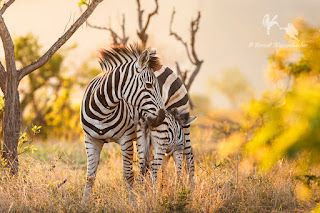
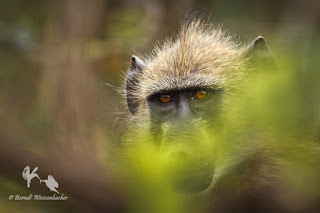
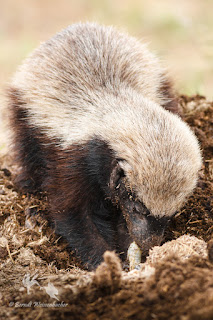

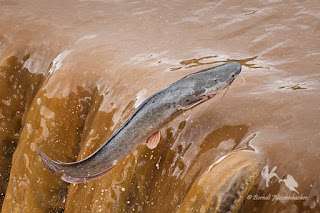
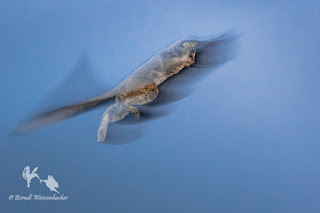
No comments:
Post a Comment